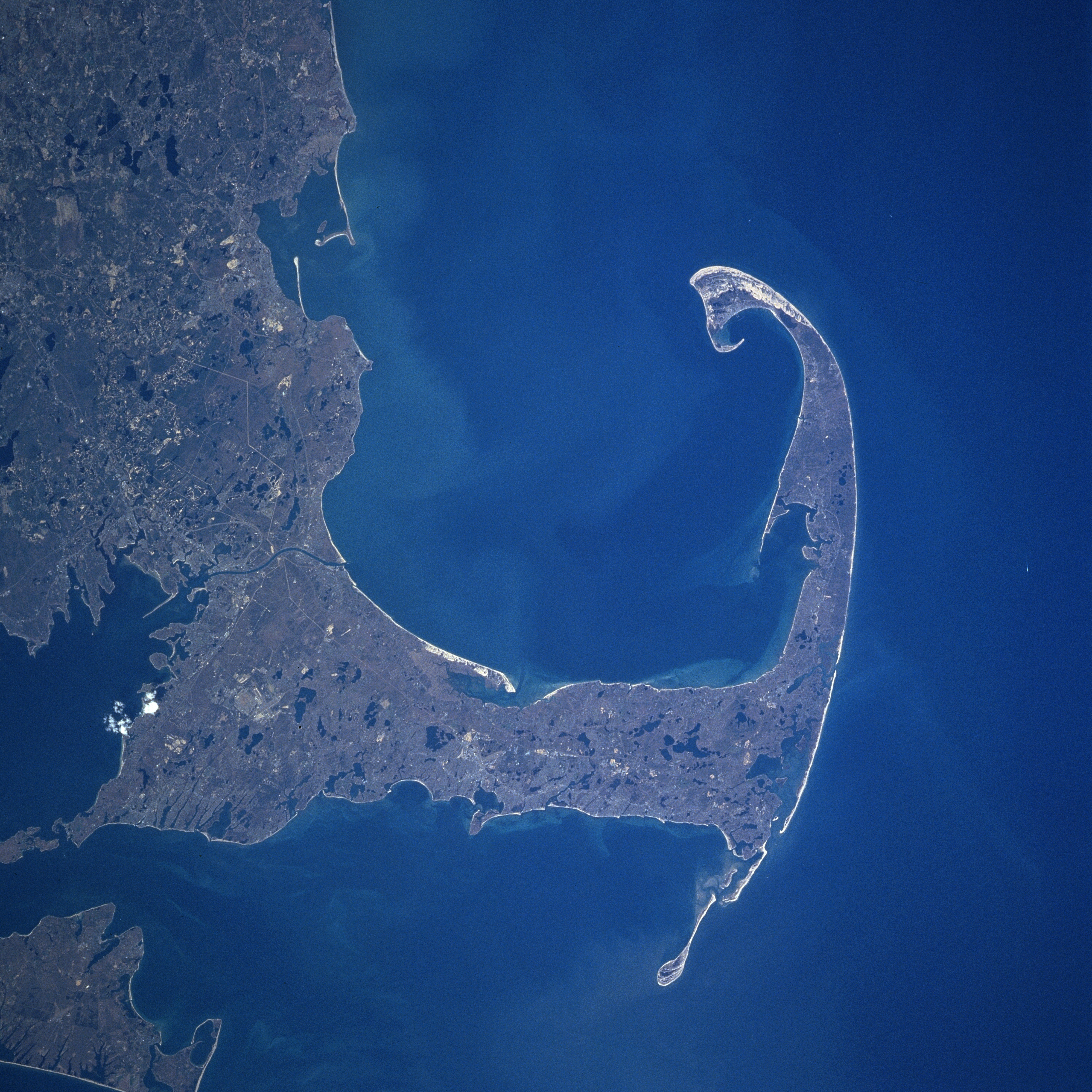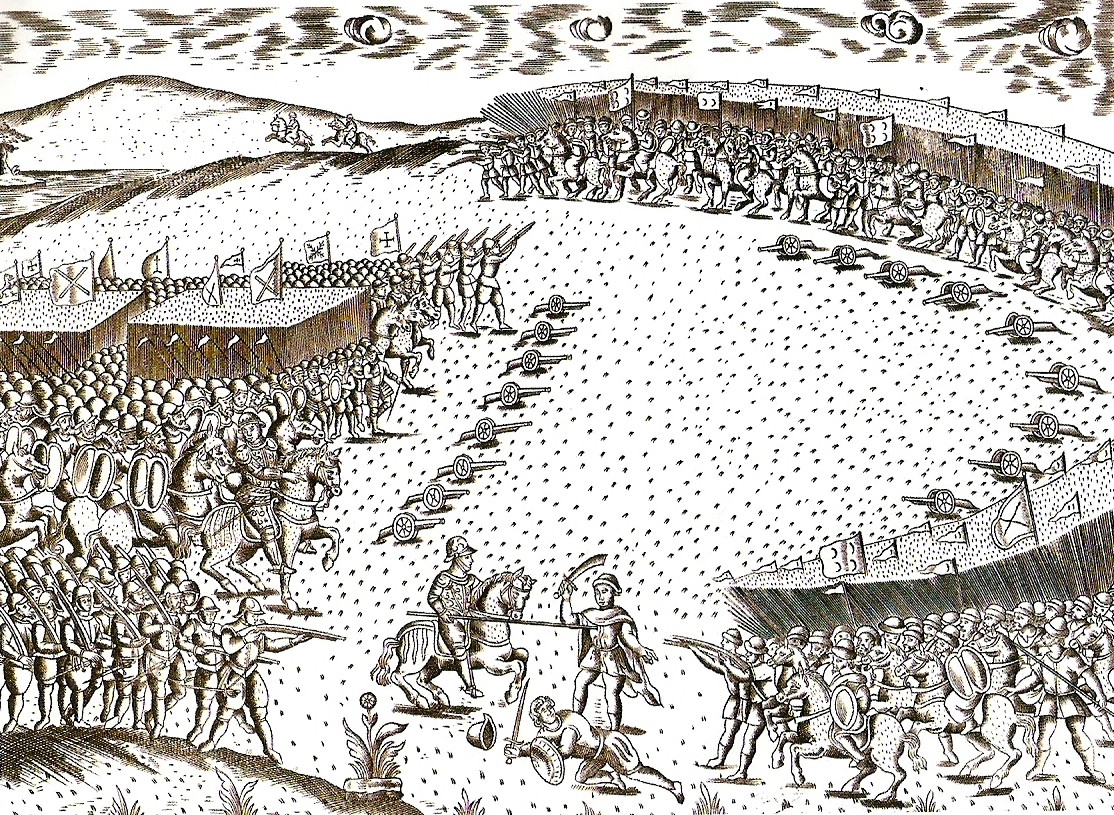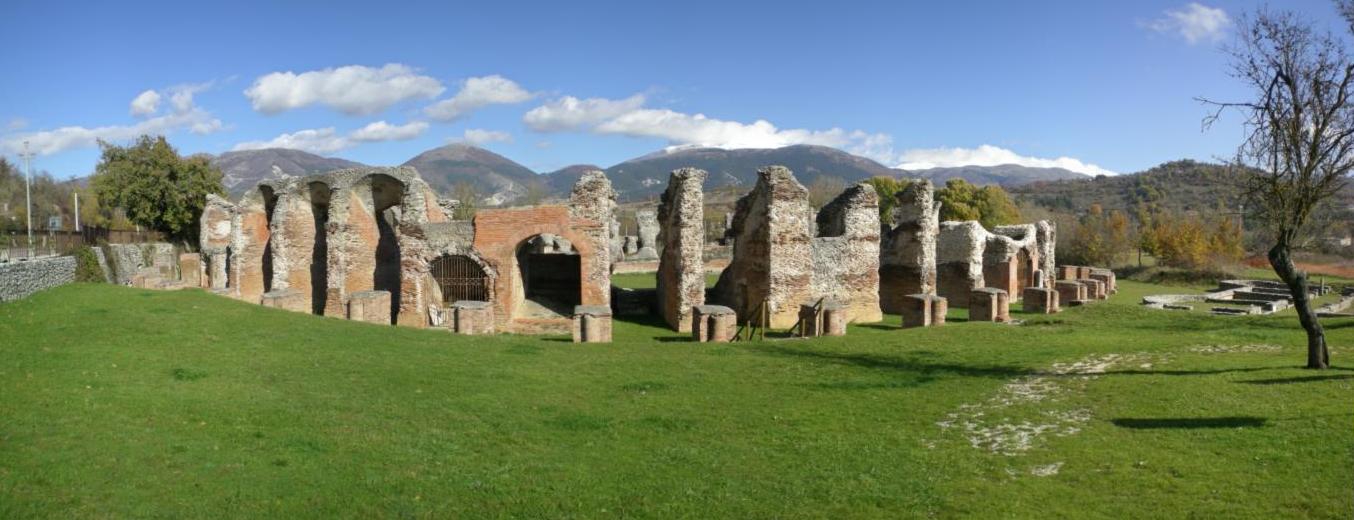|
Agnes Of Solms-Laubach
Agnes of Solms-Laubach (7 January 1578 – 23 November 1602) was a Countess of Solms-Laubach and, by marriage, Landgravine of Hesse-Kassel from 1593 until her death. Life Agnes was a daughter of Count John George (1546–1600), son of Count Frederick Magnus I of Solms-Laubach, from his marriage to Margaret of Schönburg-Glauchau (1554–1606). She married at the age of 15, on 23 September 1593, to Kassel Landgrave Maurice of Hesse-Kassel, whom she had met at the wedding of his oldest sister Anna Maria. Anna's wedding was celebrated in the presence of numerous princely guests. The marriage to the Calvinist Countess increased Maurice ties with the Calvinist counts of Wetterau considerably, although Maurice had chosen Agnes as his wife more out of love than of dynastic calculation. Agnes was described as exceptionally talented, beautiful and lovable. Matthäus Merian made an embroidery of the countess with her husband and children. On the day after Anna's death, Maurice ... [...More Info...] [...Related Items...] OR: [Wikipedia] [Google] [Baidu] |
List Of Hessian Consorts
This is a list of the Landgravine, Electress and Grand Duchess of Hesse, the consorts of the Landgrave of Hesse and its successor states; and finally of the Electors and Grand Dukes of Hesse. Landgraviate of Hesse, Hesse Upper Hesse (Marburg) The only Landgravine of Upper Hesse was Anna of Katzenelnbogen (1443–1494) who married Henry III, Landgrave of Hesse, Henry III in 1458. One could say that Anna of Brunswick was a Landgravine of Upper Hesse when it was united with Lower Hesse after 1500. Landgraviate of Hesse-Kassel, Hesse-Kassel Hesse-Marburg Hesse-Rheinfels Landgraviate of Hesse-Darmstadt, Hesse-Darmstadt Electorate of Hesse See also *List of rulers of Hesse External links * The History FilesRulers of Hesse * {{DEFAULTSORT:List of Hessian Consorts House of Hesse, List of Hessian consorts Hessian nobility, Lists of countesses, Hessian Lists of duchesses, Hessian Lists of royal consorts, Hesse ... [...More Info...] [...Related Items...] OR: [Wikipedia] [Google] [Baidu] |
Henry IV Of France
Henry IV (; 13 December 1553 – 14 May 1610), also known by the epithets Good King Henry (''le Bon Roi Henri'') or Henry the Great (''Henri le Grand''), was King of Navarre (as Henry III) from 1572 and King of France from 1589 to 1610. He was the first monarch of France from the House of Bourbon, a cadet branch of the Capetian dynasty. He pragmatically balanced the interests of the Catholic and Protestant parties in France, as well as among the European states. He was assassinated in Paris in 1610 by a Catholic zealot, and was succeeded by his son Louis XIII. Henry was baptised a Catholic but raised as a Huguenot in the Protestant faith by his mother, Queen Jeanne III of Navarre. He inherited the throne of Navarre in 1572 on his mother's death. As a Huguenot, Henry was involved in the French Wars of Religion, barely escaping assassination in the St. Bartholomew's Day massacre. He later led Protestant forces against the French royal army. Henry inherited the thro ... [...More Info...] [...Related Items...] OR: [Wikipedia] [Google] [Baidu] |
Landgravines Of Hesse-Kassel
This is a list of the Landgravine, Electress and Grand Duchess of Hesse, the consorts of the Landgrave of Hesse and its successor states; and finally of the Electors and Grand Dukes of Hesse. Landgraviate of Hesse, Hesse Upper Hesse (Marburg) The only Landgravine of Upper Hesse was Anna of Katzenelnbogen (1443–1494) who married Henry III, Landgrave of Hesse, Henry III in 1458. One could say that Anna of Brunswick was a Landgravine of Upper Hesse when it was united with Lower Hesse after 1500. Landgraviate of Hesse-Kassel, Hesse-Kassel Hesse-Marburg Hesse-Rheinfels Landgraviate of Hesse-Darmstadt, Hesse-Darmstadt Electorate of Hesse See also *List of rulers of Hesse External links * The History FilesRulers of Hesse * {{DEFAULTSORT:List of Hessian Consorts House of Hesse, List of Hessian consorts Hessian nobility, Lists of countesses, Hessian Lists of duchesses, Hessian Lists of royal consorts, Hesse ... [...More Info...] [...Related Items...] OR: [Wikipedia] [Google] [Baidu] |
1602 Deaths
Events January–March * January 3 – Battle of Kinsale: The English defeat Irish rebels and their Spanish allies. (The battle happens on this date according to the Gregorian calendar used by the Irish and Spanish but on Thursday, 24 December, 1601 according to the old Julian calendar used by the English.) * February 2 (Candlemas night) – In London, the first known production of William Shakespeare's comedy ''Twelfth Night'' takes place. * March 20 – The United East India Company is established by the United Provinces States-General in Amsterdam, with the stated intention of capturing the spice trade from the Portuguese. April–June * April 20 – The Danish–Icelandic Trade Monopoly is established. * May 25 (May 15 Old Style) – English explorer Bartholomew Gosnold, sailing in the ''Concord'', becomes the first European at Cape Cod. * June 2 – Dutch explorer Joris van Spilbergen lands on the eastern side of the island of Sri Lanka, at Santhamuruthu, and begi ... [...More Info...] [...Related Items...] OR: [Wikipedia] [Google] [Baidu] |
1578 Births
__NOTOC__ 1578 ( MDLXXVIII) was a common year starting on Wednesday in the Julian calendar. Events January–March * January 13 – The Siege of Gvozdansko ends in the Kingdom of Croatia as Ottoman Empire troops led by Ferhad Pasha Sokolović capture the fortress at Gvozdansko. * January 31 – Battle of Gembloux: Spanish forces under Don John of Austria and Alexander Farnese defeat the Dutch; Farnese begins to recover control of the French-speaking Southern Netherlands. * February 6 – Pope Gregory XIII issues the papal bull ''Illius fulti praesidio'' and creates the Diocese of Manila, the first Roman Catholic diocese in the Philippines, with Domingo de Salazar as the first Bishop of Manila. The diocese will be raised to the status of archdiocese on August 14, 1595. * February 8 – The city council of Amsterdam in the Netherlands ratifies a treaty placing the city under the authority of Willem, Prince of Orange, and joining the States of Ho ... [...More Info...] [...Related Items...] OR: [Wikipedia] [Google] [Baidu] |
16th-century Nobility From The Holy Roman Empire
The 16th century began with the Julian year 1501 (represented by the Roman numerals MDI) and ended with either the Julian or the Gregorian year 1600 (MDC), depending on the reckoning used (the Gregorian calendar introduced a lapse of 10 days in October 1582). The Renaissance in Italy and Europe saw the emergence of important artists, authors and scientists, and led to the foundation of important subjects which include accounting and political science. Copernicus proposed the heliocentric universe, which was met with strong resistance, and Tycho Brahe refuted the theory of celestial spheres through observational measurement of the 1572 appearance of a Milky Way supernova. These events directly challenged the long-held notion of an immutable universe supported by Ptolemy and Aristotle, and led to major revolutions in astronomy and science. Galileo Galilei became a champion of the new sciences, invented the first thermometer and made substantial contributions in the fields of phy ... [...More Info...] [...Related Items...] OR: [Wikipedia] [Google] [Baidu] |
House Of Solms-Laubach
Solms-Laubach was a County of southern Hesse and eastern Rhineland-Palatinate, Germany. The House of Solms had its origins in Solms, Hesse. History Solms-Laubach was originally created as a partition of Solms-Lich. In 1537 Philip, Count of Solms-Lich, ruling count at Lich, Hesse, Lich, purchased the ''Herrschaft'' Sonnewalde in Lower Lusatia which he left to his younger son Otto of Solms-Laubach (1496–1522), together with the county of Laubach. While Lich and Laubach were counties with imperial immediacy, Sonnewalde remained a semi-independent state country within the March of Lusatia (the latter being an immediate state of the Holy Roman Empire). A later Count Otto (1550–1612) moved to Sonnewalde and built the castle in 1582. In 1596 he also purchased the nearby Herrschaft of Baruth/Mark, Baruth which was also elevated to a state country within the March of Lusatia. The branch then was divided into the twigs of Solms-Laubach, :File:Solms-Sonnenwalde.PNG, Solms-Sonnewalde and ... [...More Info...] [...Related Items...] OR: [Wikipedia] [Google] [Baidu] |
Juliane Of Nassau-Siegen (1587–1643)
Countess Juliane of Nassau-Siegen (3 September 1587 – 15 February 1643), , official titles: ''Gräfin zu Nassau, Katzenelnbogen, Vianden und Diez, Frau zu Beilstein'', was a countess from the House of Nassau-Siegen, a cadet branch of the Ottonian Line of the House of Nassau, and through marriage landgravine of Hesse-Kassel. Biography Juliane was born at Dillenburg CastleHuberty, et al. (1981), p. 233. on 3 September 1587Dek (1970), p. 87.Dek (1968), p. 248. as the fifth child and second daughter of Count John VII the Middle of Nassau-Siegen and his first wife, Countess Magdalene of Waldeck-Wildungen.All sources that mention both parents, name these parents. Juliane was brought up in the strict Calvinist tradition, but was also taught old and new languages. In addition to her siblings, the stepbrothers and -sisters from her mother's first marriage also lived in the child-rich household at Dillenburg Castle. The marriage of her eldest s ... [...More Info...] [...Related Items...] OR: [Wikipedia] [Google] [Baidu] |
Sabine Of Württemberg
The Sabines (, , , ; ) were an Italic people who lived in the central Apennine Mountains (see Sabina) of the ancient Italian Peninsula, also inhabiting Latium north of the Anio before the founding of Rome. The Sabines divided into two populations just after the founding of Rome, which is described by Roman legend. The division, however it came about, is not legendary. The population closer to Rome transplanted itself to the new city and united with the preexisting citizenry, beginning a new heritage that descended from the Sabines but was also Latinized. The second population remained a mountain tribal state, coming finally to war against Rome for its independence along with all the other Italic tribes. Afterwards, it became assimilated into the Roman Republic. Etymology The Sabines derived directly from the ancient Umbrians and belonged to the same ethnic group as the Samnites and the Sabelli, as attested by the common ethnonyms of ''Safineis'' (in ancient Greek ) ... [...More Info...] [...Related Items...] OR: [Wikipedia] [Google] [Baidu] |
Amalie Elisabeth Of Hanau-Münzenberg , capital of the territory
{{Disambiguation, geo ...
Amalie may refer to: * Amalie (given name), a female given name, derived from Amalia * Amalie Arena, a hockey stadium in Tampa, Florida * Amalie Oil Company, American motor oil producer See also * * Amélie (other) * Amalia (other) * AmaLee (born 1992), U.S. singer and voice actress * Charlotte Amalie, U.S. Virgin Islands Charlotte Amalie ( ; ), located in Saint Thomas, is the historical capital and largest town of the U.S. Virgin Islands. It is located on the island's southern shore at the head of Charlotte Amalie Harbor. The town is known for its histori ... [...More Info...] [...Related Items...] OR: [Wikipedia] [Google] [Baidu] |
Landgraviate Of Hesse-Kassel
The Landgraviate of Hesse-Kassel (), spelled Hesse-Cassel during its entire existence, also known as the Hessian Palatinate (), was a state of the Holy Roman Empire. The state was created in 1567 when the Landgraviate of Hesse was divided upon the death of Philip I, Landgrave of Hesse. His eldest son William IV inherited the northern half of the Landgraviate and the capital of Kassel. The other sons received the Landgraviates of Hesse-Marburg, Hesse-Rheinfels and Hesse-Darmstadt. During the Napoleonic reorganisation of the Empire in 1803, the Landgrave of Hesse-Kassel was elevated to an Electorate and Landgrave William IX became an Imperial Elector. Many members of the House of Hesse-Kassel served in the Danish military, gaining high ranks and power in the realm because many Landgraves were married to Danish princesses. Members of the family who are known to have served Denmark-Norway include Prince Frederik of Hesse-Kassel, Prince Frederick of Hesse-Kassel, and Prince ... [...More Info...] [...Related Items...] OR: [Wikipedia] [Google] [Baidu] |
John Albert II, Duke Of Mecklenburg
John Albert II (5 May 1590 in Waren – 23 April 1636 in Güstrow) was a duke of Mecklenburg. From 1608 to 1611, he was the nominal ruler of Mecklenburg-Schwerin; the actual ruler being the regent, his great-uncle Charles I. From 1611 to 1621 John Albert and his brother Adolf Frederick I jointly ruled the whole Duchy of Mecklenburg. From 1621, John Albert ruled Mecklenburg-Güstrow alone. Life John Albert was the son of Duke John VII and Sophia of Schleswig-Holstein-Gottorp. He reigned from 16 April 1608, under the regency of his great-uncle Duke Charles I, jointly with his brother Adolf Frederick I in the Mecklenburg-Schwerin part of the country. After Charles's death, the Emperor declared Adolf Frederick an adult and he ruled alone until John Albert came of age and they began to rule jointly. In 1617 he converted to Protestantism. In the division of Mecklenburg of 1621, John Albert received Mecklenburg-Güstrow. In 1623, both brothers joined a defensive alliance of ... [...More Info...] [...Related Items...] OR: [Wikipedia] [Google] [Baidu] |




